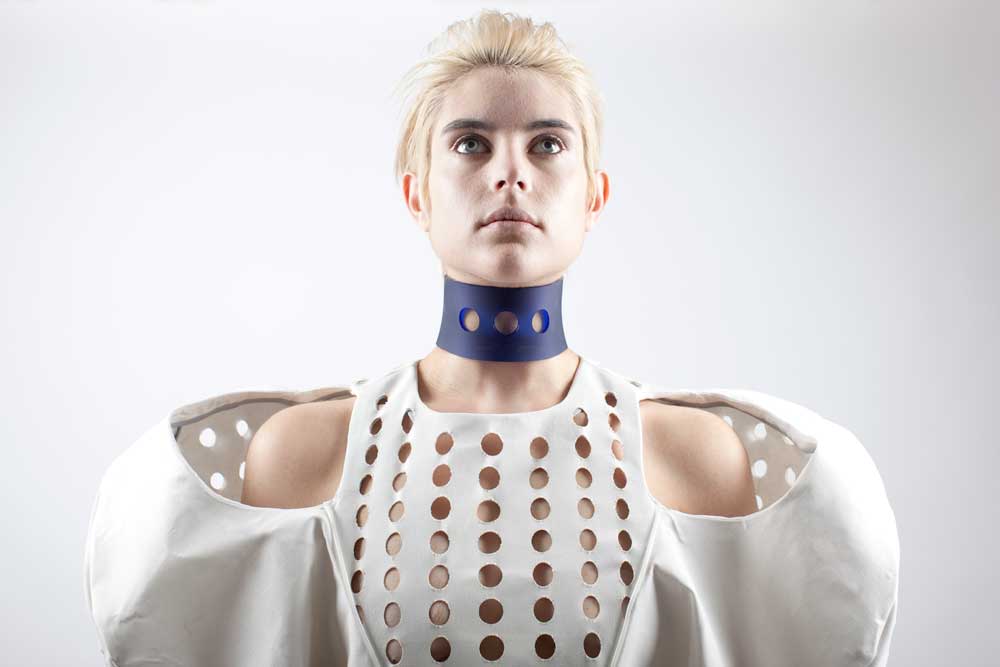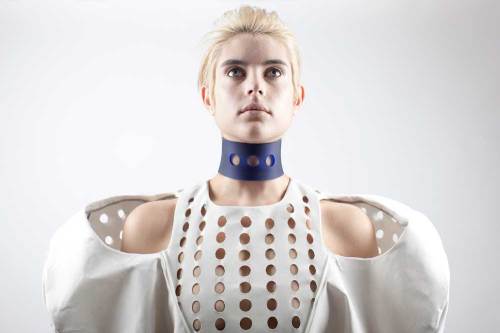
‚The designer role is changing,‘ says LCF graduate Cari Marsden, ‚the consumer is increasingly participating in the design process‘. This statement proves true, since Nike ID there has been an increased demand for a development in product uniqueness and customisation as well as memorable shopping experiences. Co-design operations, however, are still seen as a niche and as difficult to develop into brands. „The concept is innovative and consumers are intrigued, but the fashion industry so far has been rather reluctant of utilising it as real objects of consumerism. As a designer, you need courage to be open with your consumers and let them translate your products. I’m very interested in the outcomes co-design can achieve“.
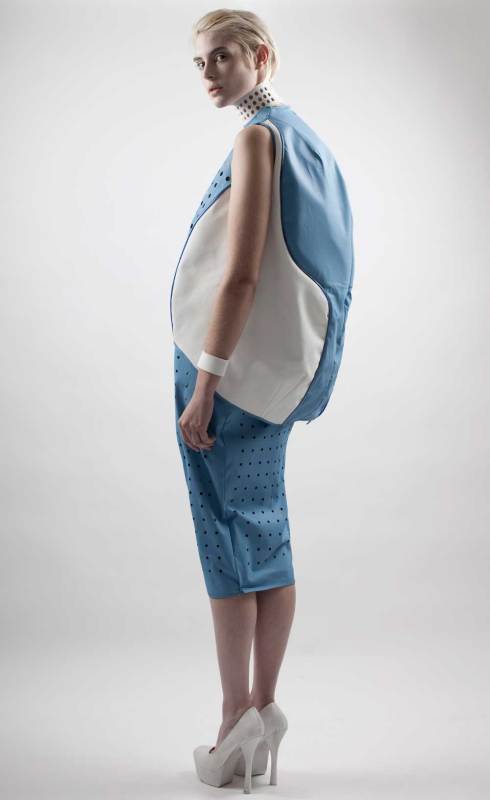
Therefore, for her MA project in Digital Fashion, Cari Marsden hopped on the train to re-create the design process. Taking traditional knotting and threading techniques into the future, Cari founded Co-Lab, where designer and consumer merge and co-design as one brand. Inspired by body modification and surgery, Cari researched tribal biomedical interpretations and with her skills in garment construction and digital processes came up with surprising silhouettes. The traditional shapes are contrasted with sterile looking materials and a clinical colour palette of whites and blues as taken from the hospital, yet creating a fresh look. Her research allowed her to analyse and interpret historical forms of interaction in tribal history to modern day situations, where consumers are communicating online. In her MA paper it reads: „Digital consumers are beginning to customise apparel, using the internet as an efficient interaction tool and becoming personalised product creators.“
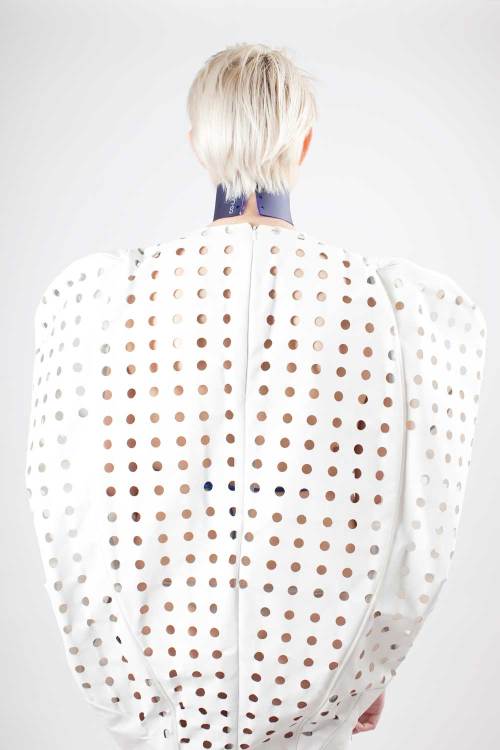
Cari developed her idea from a previous project of laser cutting holes in fabric and threading through cords by morphing ideas from contrasting areas of research, such as medical tubing, tribal jewellery, face decoration, body manipulation, pill packet patterns and surgical operations. Furthermore, when studying the work of the Italian artist Maurizio Anzeri, who stitches coloured threads over his drawings, the designer became increasingly interested in the manipulation of the face. She took inspiration from tribal masks of healing and biomedical statuesque interpretations and explored the influence illness has on a body’s silhouette and how she could portray this by manipulating and creating an illusion around the body’s shape. Cari was also inspired by the way human interaction is encouraged through illness when carrying out operations or remedies and used this as inspiration for the tactility needed in the collection.
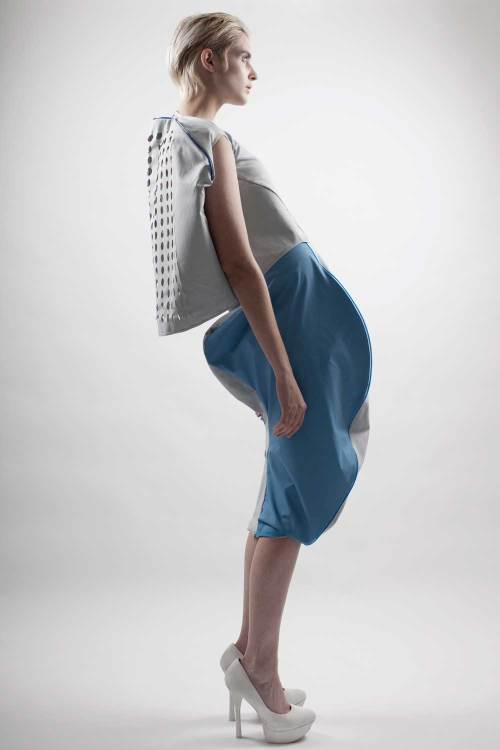
„My realisation of the toiles was affected by my fabric sourcing and selection“, the graduate recalls, „instead of selecting fabric first then working with the properties, I decided to make shapes first and then create an infrastructure to hold this. This is not a typical process to follow and upon reflection I feel it cost me time and effort. However it did force me to source innovatively, for example I used a flexible yet rigid medical tube inserted into heat sealing tape which acted as a strong structure for the garments to mould around. I also had to be creative with my finishes. I used the thick binding with concealed zips on open seams as finishing, but also as hidden thickness and added structure in the seams“. Creating those strong shapes, Cari recalls, she had difficulties when toiling in different fabrics to production, which caused her finishing and time management to suffer a little, but through smart prioritising she managed to achieve her aims as set initially. The thorough toiling she produced allowed her to work on gaining a balance in the garments of structure to hold shape, as well as volume and flexibility for laser cutting and cords to be put through.
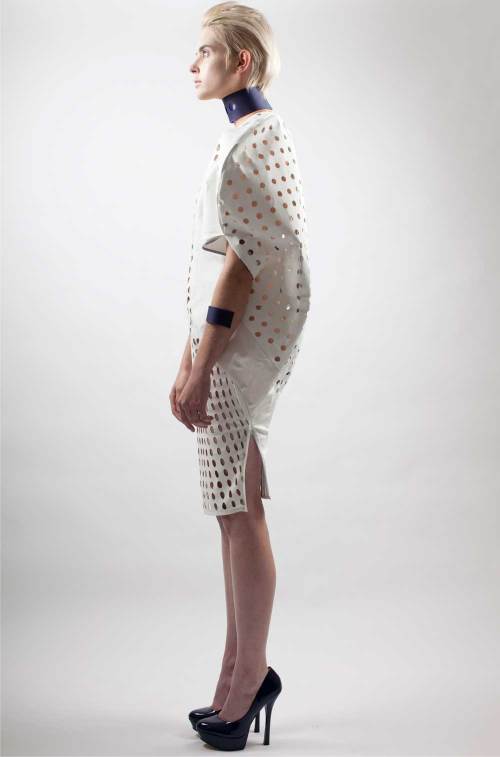
Cari talks me through her sketchbook, of which she thinks it records old and present research, a process she needs in order to explore her design identity further in terms of layout, imagery, typography and the process of design development. She aims to now commit time to producing a digital presence such as a blog. „I feel this would enrich the design process through interacting with other people“. A blog could also create a Co-Lab experience before production as well as being a selling point through her website. „The Co-Lab digital interface creates an environment where the Co-Lab community can experiment, design, select and facilitate‘ Cari explains. By splitting the brand into sub brands (Co-Collection, Co-Select and Co-String), it became an open brand, interacting with consumers whilst managing the brand identity.
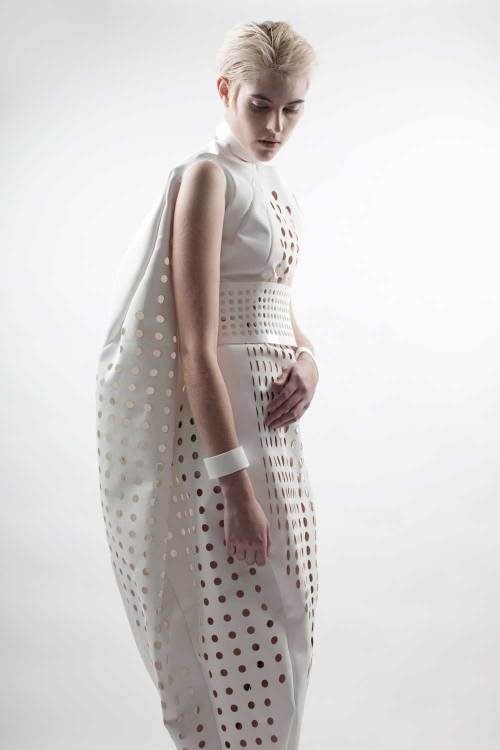
„I am proud of the digital skills I have developed“ Cari tells me, and she has definitely raised her profile to start her digital fashion career. Throughout the project she considered whether to put her name within the brand, however, as the label would not feel personal to the consumers she wants the label to connect with, she decided not to in the end. Now she seems pleased with Co-lab as the brand name as it relates to many other terms related to the brand such as collaboration, co-label, co-operation, laboratory, community, co-design, communicate. Co-Cari! ns
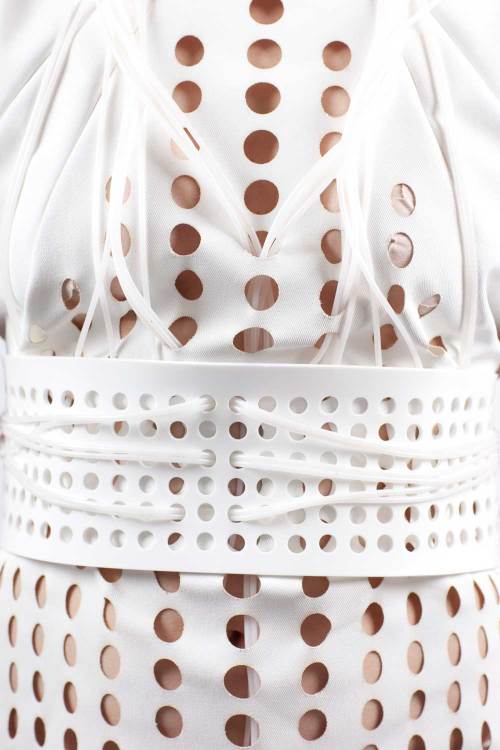
Take a journey on Cari’s website to understand the co-design element and label aesthetic.
